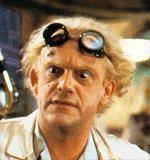Hi everyone!
I'm new to this, so any help/suggestions would be appriciated!!
I purchased an Econolite E/M controller (SN. 2TTF112A2AV) and am interested in knowing:
How old this might be?
Does anyone have parts for this controller? (if I need some)
Is there a service manual available online?
Proper way to connect service to the box?
Any other tips that you might think of that would be helpful.
Thank you all in advance!!!
Econolite E/M Controller
Moderator: SignalLab
Re: Econolite E/M Controller
Thanks to the generosity of many of the members here, the archive has a pretty good section of Econolite files.
Start here: http://signal-archive.d-domains.net/ and scroll down to the Econolite folder.
Vaughn
Start here: http://signal-archive.d-domains.net/ and scroll down to the Econolite folder.
Vaughn
The Original Vaughn
No, I don't want your free toolbar.
No, I don't want your free toolbar.
-

vaughnsimon - Crusty Old Salt

- Posts: 1784
- Joined: Thu Oct 30, 2008 5:30 pm
- Location: Palm Beach County, Florida
Re: Econolite E/M Controller
Do you have pictures of what the signal controller looks like?
Steven G.
-

steven1981 - Crusty Old Salt

- Posts: 3552
- Joined: Tue Jun 29, 2010 1:09 pm
- Location: Manahawkin, NJ
Re: Econolite E/M Controller
Thanks for the archive link, i'm sure this will be very helpful.
I'll post some pictures later this weekend.
Thanks again!!!
I'll post some pictures later this weekend.
Thanks again!!!
Mark
-

mcha9797 - Crusty Old Salt

- Posts: 1519
- Joined: Tue Aug 07, 2012 2:16 pm
- Location: Weeki Wachee Florida
Re: Econolite E/M Controller
WOW!!!
The information on the Econolite/GE E/M controllers in the archive is AWSOME!!!
Mine looks just like the GE "F" type controller but it has Econolite on the cabinet door and
serial/model number tag inside.
More questions to come..... ....i'm sure!!!
....i'm sure!!!
Thanks again!!!
The information on the Econolite/GE E/M controllers in the archive is AWSOME!!!

Mine looks just like the GE "F" type controller but it has Econolite on the cabinet door and
serial/model number tag inside.
More questions to come.....
 ....i'm sure!!!
....i'm sure!!!Thanks again!!!
Mark
-

mcha9797 - Crusty Old Salt

- Posts: 1519
- Joined: Tue Aug 07, 2012 2:16 pm
- Location: Weeki Wachee Florida
Re: Econolite E/M Controller
A number of us (myself included) have a GE or Econolite F controller. I'm sure somebody here will be able to answer just about every question you have.
Can't wait to see those pics!
Can't wait to see those pics!
-Sean B


-

Econo101 - Crusty Old Salt

- Posts: 1987
- Joined: Thu Oct 23, 2008 8:09 pm
- Location: Toronto Ontario Canada
Re: Econolite E/M Controller
Trying to add pictures. Not used to Photo Bucket, lets see if I can make it work.... 
It says that my images may only be 670 pixels wide, I took them at the lowest resolution on my camera????
It won't send...

It says that my images may only be 670 pixels wide, I took them at the lowest resolution on my camera????
It won't send...

Mark
-

mcha9797 - Crusty Old Salt

- Posts: 1519
- Joined: Tue Aug 07, 2012 2:16 pm
- Location: Weeki Wachee Florida
Re: Econolite E/M Controller
I'm still working on adding some pictures to my post's, can't seem to resize them to add and send on the message 
I wired both signals to the controller and everything seems to work well except that there is an overlap on the side street signal from green to red and from red to green, the yellow light stays on during the switch, main street works fine. I assume that there are too many teeth broken off the cam??
The next question is....how do I connect the ped lights to this controller??
I have an Econolite/GE type F controller w/3 dials and no timers on the door, why do the 2nd and 3rd dials not function?
More questions to come...
Thank you all in advance!!!!!

I wired both signals to the controller and everything seems to work well except that there is an overlap on the side street signal from green to red and from red to green, the yellow light stays on during the switch, main street works fine. I assume that there are too many teeth broken off the cam??
The next question is....how do I connect the ped lights to this controller??
I have an Econolite/GE type F controller w/3 dials and no timers on the door, why do the 2nd and 3rd dials not function?
More questions to come...

Thank you all in advance!!!!!
Mark
-

mcha9797 - Crusty Old Salt

- Posts: 1519
- Joined: Tue Aug 07, 2012 2:16 pm
- Location: Weeki Wachee Florida
Re: Econolite E/M Controller
mcha9797 wrote:I'm still working on adding some pictures to my post's, can't seem to resize them to add and send on the message
Resizing a picture is fairly simple. If you have a program that could alter your pictures, then you're in business. Personally, I prefer to use Paint, since it takes me less than 30 seconds to resize a picture on the program. Should you use Paint, then resize the pixels, not the percentage. It's simple as 1, 2, 3. The next step is to upload the picture onto your Photobucket account. Then, copy and paste the "img" link from the picture on the account to the comment box here.
mcha9797 wrote:The next question is....how do I connect the ped lights to this controller??
I have an Econolite/GE type F controller w/3 dials and no timers on the door, why do the 2nd and 3rd dials not function?
The necessary connections for pedestrian signals are located right above the necessary connections for traffic signals. If I recall from memory, each terminal section is labeled with a number. In total, there are 9 I believe. Keep in mind that each terminal section corresponds to a cam in the cam assembly. Also, aside from pedestrian signals, terminal sections 1-9 could be used for an additional phase, or an additional traffic signal head.
One thing to be aware of is that the type F was not intended to operate the flashing "DONT WALK" clearence. The transition from "WALK" to "DONT WALK" is rather plain and simple.
In regards to your dial timers, two of the three dial slots are probably not wired to the backpanel. Some signals controllers were only intended to operate on only one dial timer, while others were intended to use more than one. I don't know if there is a schematic that lingers for the type F, but you need (if you don't have them already) transfer relays for the extra dial slots. On the backpanel, there would be two I believe. One for dial slot 2, and one for dial slot 1. A timer mechanism would control the time length of the operation for each dial timer (if more than one is used), however, you can manually control the transfer of power from one dial timer to another. Normally, a switch is present on the backpanel. It generally has three positions that represent the three dial timer slots.
Steven G.
-

steven1981 - Crusty Old Salt

- Posts: 3552
- Joined: Tue Jun 29, 2010 1:09 pm
- Location: Manahawkin, NJ
Re: Econolite E/M Controller
There is no need to resize anything! Photobucket will provide you with a clickable thumbnail that sends folks straight to your full-sized image. See here: http://forums.signaltraffic.com/viewtopic.php?f=21&t=2888
This is the best way to do it because it takes the image load off of the forum and reduces download time for members with low bandwidth connections.
See the forum's tutorial section for more on images.
Vaughn
This is the best way to do it because it takes the image load off of the forum and reduces download time for members with low bandwidth connections.
See the forum's tutorial section for more on images.
Vaughn
The Original Vaughn
No, I don't want your free toolbar.
No, I don't want your free toolbar.
-

vaughnsimon - Crusty Old Salt

- Posts: 1784
- Joined: Thu Oct 30, 2008 5:30 pm
- Location: Palm Beach County, Florida
Who is online
Users browsing this forum: SignalFreak and 0 guests
